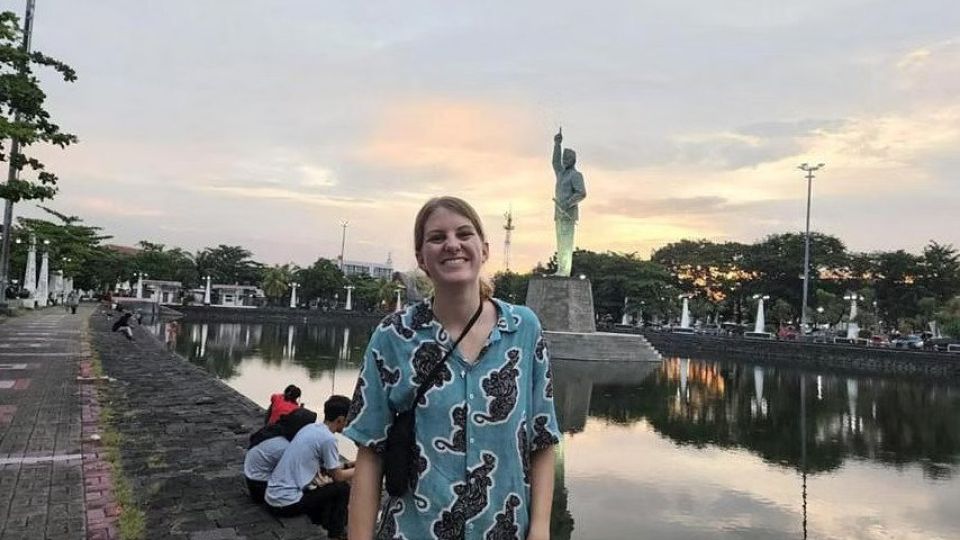November 15, 2023
JAKARTA – At Australia’s largest university, Monash, an estimated 9,000 Australians started undergraduate studies in 2023. Yet fewer than 20 of these chose to study Bahasa Indonesia – the language of the country’s largest neighbour.
The startlingly low intake at the university is part of a worrying trend that has played out across Australia at universities and schools.
Of Australia’s more than 40 universities, just 12 now teach the language, down from 22 in 1992.
The number of students learning Bahasa Indonesia in high schools in New South Wales, the most populous state, dropped from 306 in 2002 to 90 in 2022, according to figures published on The Conversation website.
In the second most populous state, Victoria, the numbers dropped from 1,061 to 387 during the same period.
Mr Zain Brown, 20, one of the few first-year undergraduates to study Bahasa Indonesia at Monash University in 2023, told The Straits Times that he developed an interest in the language after living in Jakarta with his family when he was eight to 13 years old. His parents, who work in the aid sector, both speak the language.
Mr Brown, who is studying for an arts degree combined with a diploma of Indonesian language studies, said: “I think having a personal experience and a background with Indonesia made me want to study it.”
Asked why he thought so few Australians choose to learn the language, he said: “A lot of Australians know Bali and basically not very much else about Indonesia.”
Another student, Ms Catherine Morris, 19, who is studying the language and linguistics at the University of Western Australia (UWA), echoed this view, saying: “The first thing people ask me is, ‘Why?’”
Ms Morris, who studied the language as a compulsory subject in high school and took a liking to it, added: “Why would you not learn the language of one of your closest neighbours and an emerging trading partner? It is really important for Australians to learn it.”
At UWA, just 75 students are learning the language at various levels, compared with about 320 each for Mandarin, Korean and Japanese. Part of the reason for the falling popularity of the Indonesian language studies is Australia’s monolingual culture, and the country has one of the lowest uptakes of foreign languages in the developed world.
Dr Jessica Kruk, a lecturer of Indonesian Studies and Linguistics at UWA, said Australia had a “monolingual mindset”, which was reinforced by Australians’ experience of visiting Bali – a popular tourist destination, where visitors can often get by speaking English.
Dr Kruk said there were also low levels of knowledge in Australia about Indonesian culture, or about drawcards for potential students such as Indonesia’s economic growth, cultural diversity or tech boom. “Students are typically interested in learning a language if they want to engage with the culture with which that language is associated,” she said.
“There are still a lot of negative attitudes towards Indonesia since the Bali bombings, and negative press that casts Indonesia as religiously conservative and a dangerous place,” she added, referring to the terrorist attacks in 2002 by Islamic extremists that killed 202 people, including 88 Australians.
“It is a vicious circle. The lack of knowledge leads to a lack of interest in studying (the language) that itself feeds a lack of knowledge.”
The falling number of Indonesian language students has raised concerns about Canberra’s capacity to develop closer diplomatic and trade ties with Jakarta just as Indonesia’s economy is growing, and the country is seen as a crucial future regional partner as tensions increase in the face of China’s rise.
With a population of 279 million, Indonesia is the world’s 16th largest economy – Australia is 12th – but Indonesia is expected to become the world’s fourth largest by 2045.
Experts say Australia must urgently boost investment in teaching Bahasa Indonesia in schools and universities. Similar efforts in the early 1990s led to a sharp increase in the number of students, but funding and numbers have both since plunged.
Dr Sharyn Davies, an expert on Indonesian studies at Monash University, said Australia’s diplomatic, trade and intelligence agencies will struggle to find Bahasa Indonesia speakers in future. “The government should be very worried about it,” she said. “The best way we can ensure stable friendships is to understand the other country.”
Dr Davies said the media must do more to depict Indonesia’s strengths and diversity, and the business community also suffered from an “arrogant” assumption that it was not important for English speakers to learn other languages.
She said potential students are less attracted by arguments about a country’s strategic importance than perceptions that the country’s culture is “cool”. The Indonesian government, she noted, could do more to promote Indonesian culture.
“We have seen the Korean language take off because it has K-pop and that cool factor,” she said. “Indonesia has that, too, but we need to be able to showcase that to students.”
Still, Mr Brown, the student at Monash University, observed one advantage of the small number of students in his class, noting that his Indonesian language abilities may one day be his “most employable skill”.
“A perverse side of it being such a small cohort is that I can imagine there will be good opportunities coming out of that for people who can speak it,” he said.


